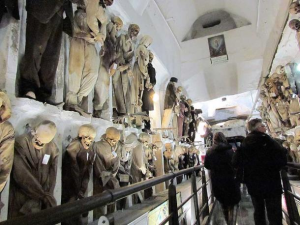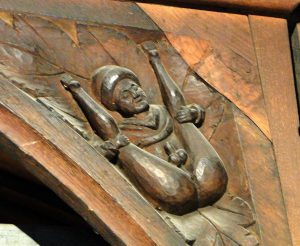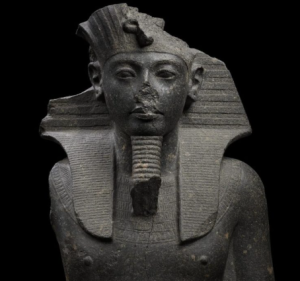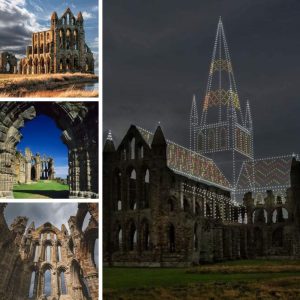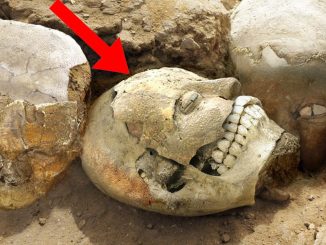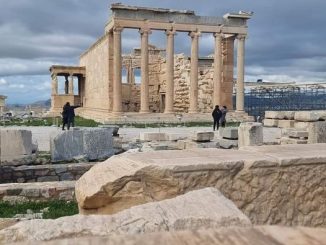‘Indiana Bones’ and the Catacomb Saints

Incredible skeletal remains of Catholic saints still dripping in gems and jewellery discovered by ‘Indiana Bones’ explorer
While researching and writing another book on charnel houses, art historian, Paul Koudounaris, stumbled upon an amazing, if macabre, collection of 400 year-old, heavily jewel-encrusted skeletons hidden away in some of the most secretive religious establishments in Europe. His expedition and the resulting photographs of dozens of these relics is now being revealed in his new book, Heavenly Bodies: Cult Treasures and Spectacular Saints from the Catacombs. This is the first time that photographs of the skeletons have been published.

St Valerius in Weyarn

A catacomb saint in Schlehdorf Abbey

St Albertus
The book marks the first time that the story of these relics, which were lovingly and lavishly adorned with thousands of pounds of gold, silver, pearls, and precious stones, is being told and it is one of mystery, the Catholic Church in Europe and the Protestant Reformation.
St Felix
According to the Daily Mail, ‘thousands of skeletons were dug up from Roman catacombs in the 16th century and installed in towns around Germany, Austria and Switzerland on the orders of the Vatican and sent to Catholic churches and religious houses to replace the relics destroyed in the wake of the Protestant Reformation in the 1500s. Each one was painstakingly decorated by devoted followers before being displayed in church niches. Many took up to five years to decorate. Some of the skeletons are said to be the remains of early Christian martyrs and were even found hidden away in lock-ups and containers.’

St Benedictus

St Deodatus in Rheinau, Switzerland

St Valentinus in Waldsassen

St Getreu in Ursberg, Germany
‘Mistaken for the remains of early Christian martyrs, the morbid relics, known as the Catacomb Saints, became shrines reminding of the spiritual treasures of the afterlife. They were also symbols of the Catholic Church’s newly found strength in previously Protestant areas.’

St Friedrich at the Benedictine abbey in Melk, Austria
 The hand of St Valentin in Bad Schussenreid, Germany (above) and St Munditia, in the church of St Peter in Munich (below).
The hand of St Valentin in Bad Schussenreid, Germany (above) and St Munditia, in the church of St Peter in Munich (below). 
‘They were renamed as saints, although none of them qualified for the title under the strict rules of the Catholic church which require saints to have been canonised, but by the 19th century they had become morbid reminders of an embarrassing past and many were stripped of their honours and discarded.’

St Vincentus in Stams, Austria

The identity of this skull is unknown

St Luciana was sent to the convent in Heiligkreuztal, Germany, where the nuns in Ennetach painstakingly prepared her for display
In an interview, Mr Koudounaris said:
‘After they were found in the Roman catacombs the Vatican authorities would sign certificates identifying them as martyrs then they put the bones in boxes and sent them northwards. The skeletons would then be dressed and decorated in jewels, gold and silver, mostly by nuns. They had to be handled by those who had taken a sacred vow to the church – these were believed to be martyrs and they couldn’t have just anyone handling them. They were symbols of the faith triamphant and were made saints in the municipalities. One of the reasons they were so important was not for their spiritual merit, which was pretty dubious, but for their social importance. They were thought to be miraculous and really solidified people’s bond with a town. This reaffirmed the prestige of the town itself. It’s impossible to put a modern-day value on the skeletons.’
















